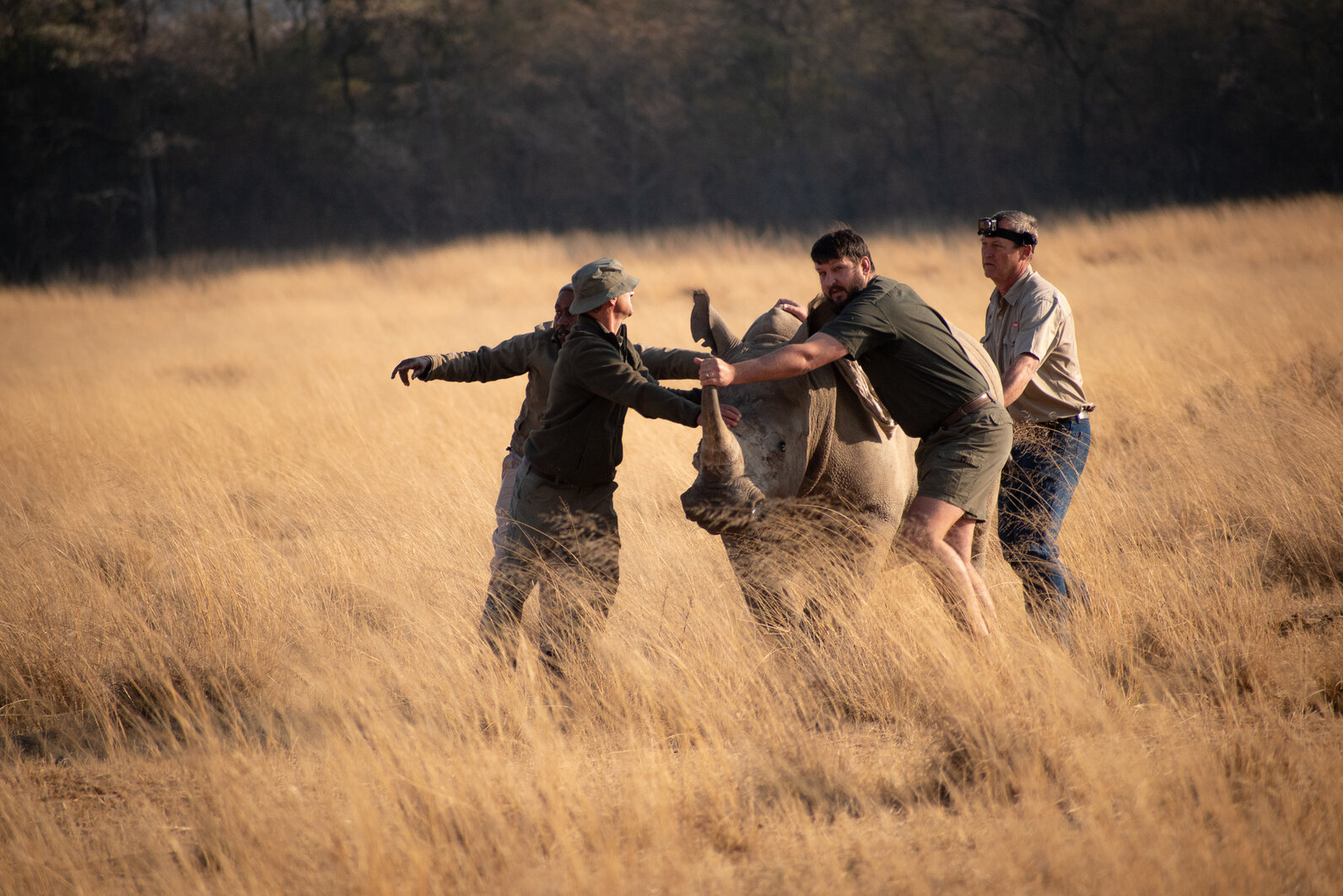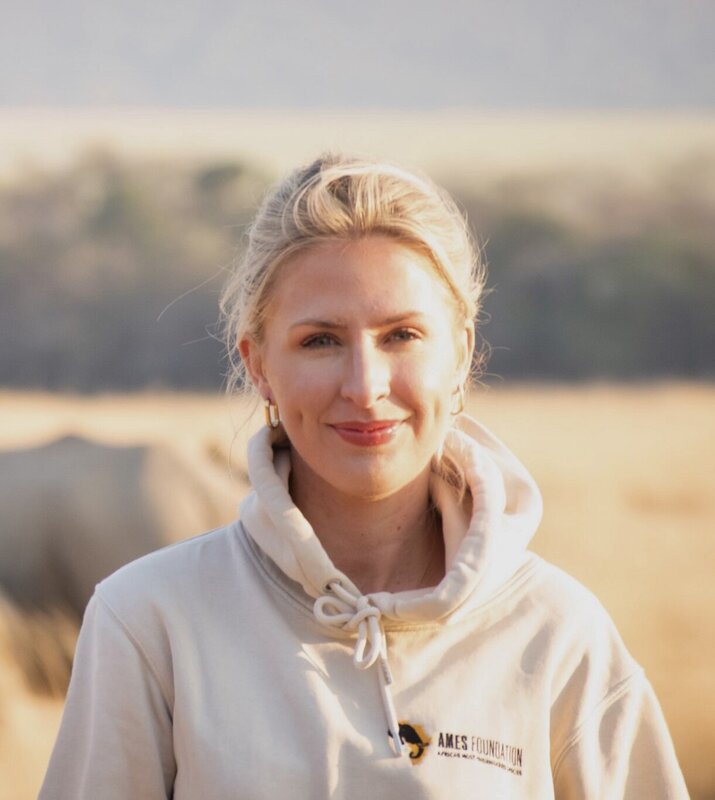“I hope that, one day, I’ll be able to show my children a rhino in the wild”
At only thirty years old, Lea Henzgen already has an impressive entrepreneurial track record. And now, she has another goal on her mind: protecting endangered wildlife in Africa. While she was earning her master’s degree from WHU, Henzgen and some of her contacts at the school started the AMES Foundation. Today, the initiative is not only protecting some 2,000 hectares of land in South Africa, but also developing a new investment model through its Habitat Fund to help the environment. In this interview, Henzgen explains the role that technology is playing in their efforts, how local jobs lead to ecosystem preservation, and what the AMES Foundation hopes to achieve in the future.
Lea, how would you describe the work conducted at the AMES Foundation?
Our projects run the gamut—from controlling for threats to maintaining early warning systems over to community outreach. We have made it our mission to protect natural habitats in Africa to maintain biodiversity. One focus we have is protecting wildlife from poachers. At our first nature reserve, the protection of rhinoceroses is of major concern, as they are quite endangered, and their habitat is rapidly shrinking. Their horns are some of the world’s most expensive illegal wildlife products, going for up to US$300K per kilo. That’s more costly than cocaine or gold. Roughly twenty people work on our reservation in the Waterberg region, and that includes conservationists dedicated to protecting the environment and natural resources, anti-poaching rangers, and even a sniffer dog. We’re also generating new jobs for the local community there, which is just as essential as surveillance systems are for protecting nature.
You have a lot riding on technology to help bolster your nature conservation efforts. Why is that?
We invest a lot in anti-poaching measures and use what we call “conservation tech,” which helps to improve all of our safety measures across the board. That includes AI-assisted drones, which help us distinguish between animals; cameras with heat sensors; and an automatic early warning system that keep our rangers informed when, for example, intruders enter the reservation. These technologies allow us to identify potential poachers and react more quickly. They make our protection efforts on the reservation more efficient and precise, particularly in our larger areas.

How important is it to your team to involve locals in your projects?
It is central to the success of our work. Our efforts will only have long-lasting effects if they also create value for the community. Our second reservation, maintained by our Habitat Fund, has generated 200 new jobs. The unemployment rate in South Africa is currently at 43.1%, and the Pondoland region specifically has the highest rates in the entire country. One job can help provide for an entire family, on average about seven people. Those in the local community who see that nature preservation also means a stable, long-term income often join our project. We hope to change people’s attitudes for the long haul that their environment should be preserved and not exploited. That’s how our impact has grown.
How did the AMES Foundation, and later the Habitat Fund, come to fruition?
Marlon Braumann, my mentor at WHU, was in South Africa in 2019, and he reached out to me. He had seen some wild things play out in the area of animal protection and said, “We have to do something.” A few weeks later, we were sitting with some friends in Berlin and did some online research for how one goes about starting a foundation. We wanted to build something that was transparent, efficient, and truly effective. Every cent we raised had to go toward the project. And we knew that to scale the project, we would need more than donations. We went through a restructuring process in 2022, and that gave way to our idea for the Habitat Fund, which invests not in companies but in the environment in Africa. Essentially, we’re turning nature into something investable. Investments have an economic and ecological effect. Our fund principally works the same as venture capital or private equity funds: We acquire land or shares in larger protected areas and ensure that the biodiversity in those areas is protected and that the different lands themselves connect with each other. And we turn a profit for our investors through the employment of various environmentally friendly business models, for example, sustainable tourism, renewable energy, and more. Our goal is to have one million hectares of land under our protection by 2035. That would be roughly four times the size of the state of the Saarland in Germany.
What motivates you to invest so much time and energy into this line of work?
I often phrase it as “preserving memories.” I hope to, one day, be able to show my kids a rhino in the wild. Those of us who live in the Western world are extremely privileged, which, from my point of view, comes with responsibility. Every one of us can decide how they want to deal with that responsibility. There is enough suffering in this world, and it’s not feasible to take it all on alone. But in my opinion, the privilege that we have has also given us the responsibility of dedicating ourselves to a cause and giving back. AMES is no longer just a simple project; it’s something close to our hearts, something we enjoy, and something that we hope has a lasting effect on the community. One of my co-founders said once, “Doing good doesn’t have to be a chore. It can also be fun.” And that’s how it is for us. Very much so.
Thanks for the chat, and we wish you a lot of success for the future.
More ‘5 Questions With’ interviews can be found here.

